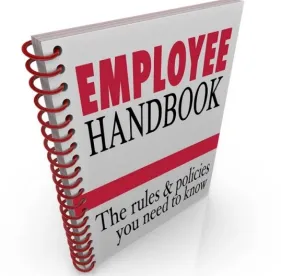Following up on the NLRB’s decision in The Boeing Company, 365 NLRB No. 154 (Dec. 14, 2017), on June 6, NLRB General Counsel Peter Robb issued a new Guidance Memorandum (18-04) detailing how NLRB Regional Offices receiving claims of improper employment policies are to interpret employer workplace rules. As we reported this past December (here), in Boeing, the Board established a new (and much more employer-friendly) standard for the lawfulness of employee work rules. As discussed in detail below, the Memo gives examples of specific policies that are to be found lawful and directs Regional Offices to no longer interpret ambiguous rules against the drafter or generalized provisions as banning all activity that could conceivably be included within the rule. Thus, Regional Offices will now look to whether a rule would be interpreted as prohibiting Section 7 activity, as opposed to whether it could conceivably be so interpreted.
In Boeing, the Board reassessed its standard for when the mere maintenance of a work rule violates Section 8(a)(1) of the NLRA. The Board established a new standard that focused on the balance between the rule’s negative impact on employees’ abilities to exercise their NLRA Section 7 rights, and the rule’s connection to an employer’s right to maintain discipline and productivity in the workplace. Going forward, work rules are to be categorized in three categories: (1) rules that are generally lawful to maintain; (2) rules warranting individualized scrutiny; and (3) rules that are plainly unlawful to maintain. The General Counsel’s Memo places a number of commonly found workplace policies into these three groupings.
Category 1 Rules are generally lawful either because the rule, when reasonably interpreted, does not prohibit or interfere with the exercise of rights guaranteed by the NLRA, or because the potential adverse impact on protected rights is outweighed by the business justifications associated with the rule. The examples provided in the Memo of the types of rules that fall into this category include:
-
Civility rules (such as “disparaging, or offensive language is prohibited”);
-
No-photography rules and no-recording rules;
-
Rules against insubordination, non-cooperation, or on-the-job conduct that adversely affects operations;
-
Disruptive behavior rules (such as “creating a disturbance on company premises or creating discord with clients or fellow employees is prohibited”);
-
Rules protecting confidential, proprietary, and customer information or documents;
-
Rules against defamation or misrepresentation;
-
Rules against using employer logos or intellectual property;
-
Rules requiring authorization to speak for the company; and
-
Rules banning disloyalty, nepotism, or self-enrichment.
Category 2 Rules are not obviously lawful or unlawful, and must be evaluated on a case-by-case basis to determine whether the rule would interfere with rights guaranteed by the NLRA, and if so, whether any adverse impact on those rights is outweighed by legitimate justifications. General Counsel Robb identified the following examples of types of Category 2 Rules:
-
Broad conflict-of-interest rules that do not specifically target fraud and self-enrichment and do not restrict membership in, or voting for, a union;
-
Confidentiality rules broadly encompassing “employer business” or “employee information” (as opposed to confidentiality rules regarding customer or proprietary information, or confidentiality rules more specifically directed at employee wages, terms of employment, or working conditions);
-
Rules regarding disparagement or criticism of the employer (as opposed to civility rules regarding disparagement of employees);
-
Rules regulating use of the employer’s name (as opposed to rules regulating use of the employer’s logo/trademark);
-
Rules generally restricting speaking to the media or third parties (as opposed to rules restricting speaking to the media on the employer’s behalf);
-
Rules banning off-duty conduct that might harm the employer (as opposed to rules banning insubordinate or disruptive conduct at work, or rules specifically banning participation in outside organizations); and
-
Rules against making false or inaccurate statements (as opposed to rules against making defamatory statements).
Category 3 Rules are generally unlawful because they would prohibit or limit NLRA-protected conduct, and the adverse impact on the rights guaranteed by the NLRA outweighs any justifications associated with the rule. The examples provided in the Memo of the types of rules that fall into this category include:
-
Confidentiality rules specifically regarding wages, benefits, or working conditions; and
-
Rules against joining outside organizations or voting on matters concerning the employer.
Prior to Boeing, employers had been far more hesitant to prohibit employee conduct when crafting handbook rules for fear that those rules could be construed as possibly infringing on employees’ Section 7 rights. NLRB GC Robb’s Guidance Memorandum provides helpful clarity, with a detailed analysis and specific examples, as to how certain types of workplace rules would fall within the three-category analysis espoused by the Board in Boeing. The Memorandum is particularly enlightening to employers as it foreshadows the manner in which a NLRB Regional Office would prosecute a potential unfair labor practice charge brought by an employee or union. Significantly, GC Robb expressly stated that Regions will not interpret ambiguities in rules against the drafter – this certainly benefits employers in any proceeding. We expect this guidance to lead to fewer charges brought against employers in this arena, but only if employers heed the GC’s advice when drafting their employee handbooks.





 />i
/>i

